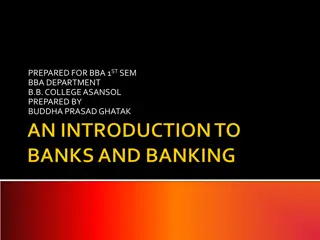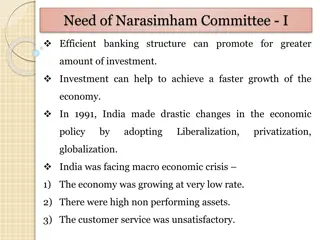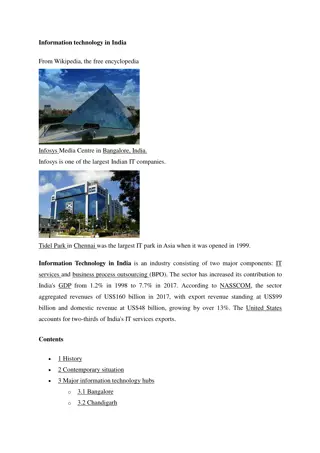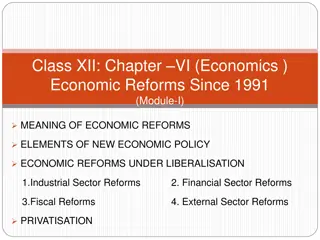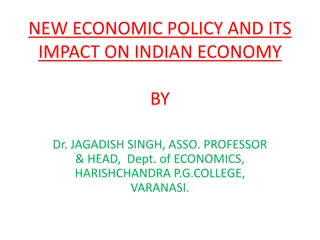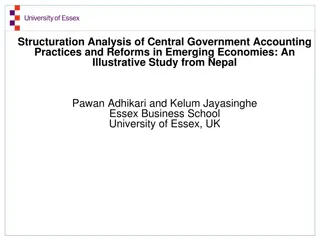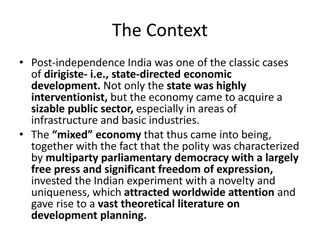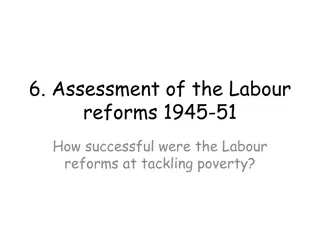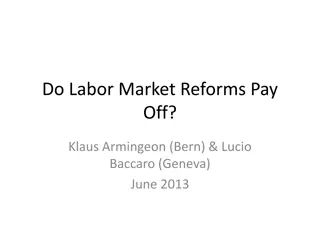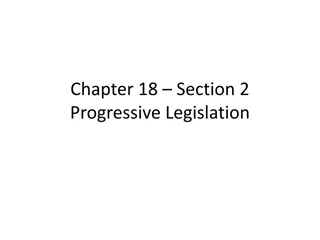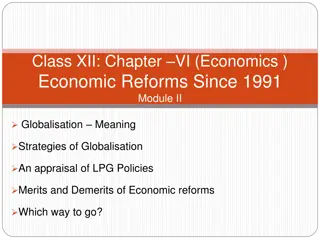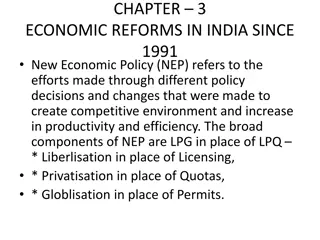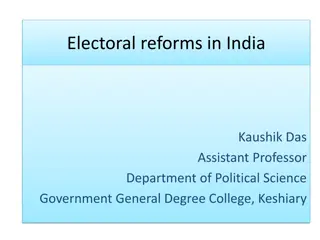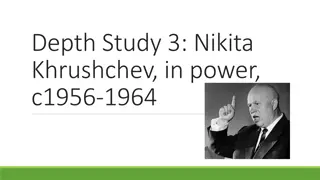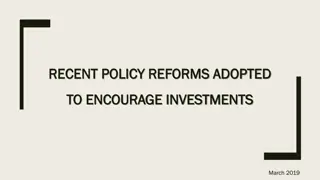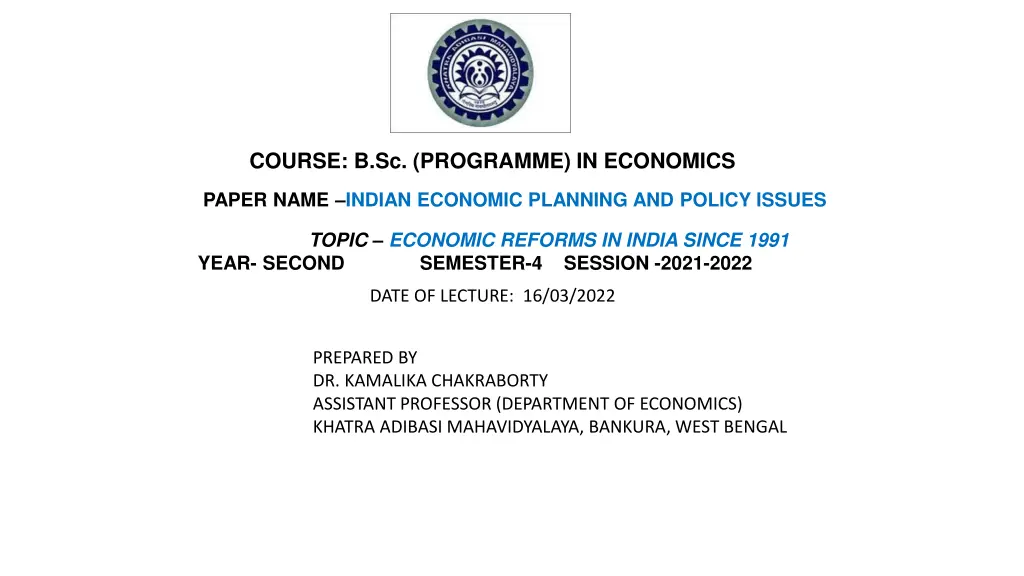
Indian Economic Reforms Since 1991: Overview
Explore the economic reforms in India since 1991, including the need, pillars of reforms, steps taken, and their impact, reflecting on liberalization, privatization, and globalization policies.
Download Presentation

Please find below an Image/Link to download the presentation.
The content on the website is provided AS IS for your information and personal use only. It may not be sold, licensed, or shared on other websites without obtaining consent from the author. If you encounter any issues during the download, it is possible that the publisher has removed the file from their server.
You are allowed to download the files provided on this website for personal or commercial use, subject to the condition that they are used lawfully. All files are the property of their respective owners.
The content on the website is provided AS IS for your information and personal use only. It may not be sold, licensed, or shared on other websites without obtaining consent from the author.
E N D
Presentation Transcript
COURSE: B.Sc. (PROGRAMME) IN ECONOMICS PAPER NAME INDIAN ECONOMIC PLANNING AND POLICY ISSUES TOPIC ECONOMIC REFORMS IN INDIA SINCE 1991 YEAR- SECOND SEMESTER-4 SESSION -2021-2022 DATE OF LECTURE: 16/03/2022 PREPARED BY DR. KAMALIKA CHAKRABORTY ASSISTANT PROFESSOR (DEPARTMENT OF ECONOMICS) KHATRA ADIBASI MAHAVIDYALAYA, BANKURA, WEST BENGAL
Concept Economic reforms encompasses those changes in policies that aim at enhancing the efficiency of a country. In the year 1991, India witnessed a major shift in its economic policies, making it a turning point in the history of the Indian Economy. The severe Economic crisis suffered by India in 1991 was uncontrollable with the situation getting worse gradually. The result was that inflation reached its pinnacle with daily use commodities becoming extremely expensive, hurting people.
Need for Economic Reforms in India Unfavourable situation in BOP as imports exceeded exports Disappointing performance of the public sector Fall in exchange reserves to a very low level which were not sufficient for even a fortnight Government expenditure exceeded government revenue that led to government borrowing from public, banks and international financial institutions like IMF, World Bank etc. Controlling inflation was the need of the hour
Three main pillars of New Economic Reforms in India Liberalisation: Breaking the bottlenecks and obstacles that persisted during the license-raj system. Privatisation: Allowing private players into those areas which were earlier dominated by the government. Globalisation: Opening up of Indian domestic economy for entry of foreign companies post 1991.
Steps taken under Liberalisation Reforms in the Foreign Exchange sector Tax reforms Delicensing of the Industrial sector Financial sector reforms Trade and Investment Policy reforms Steps taken under Privatisation Selling up the shares of public sector undertakings to private players i.e. transfer of ownership or management to private companies, either partially or entirely. Steps taken under Globalisation Globalisation implies unification of domestic economy with world economy. Outsourcing was a fall out of globalisation.



